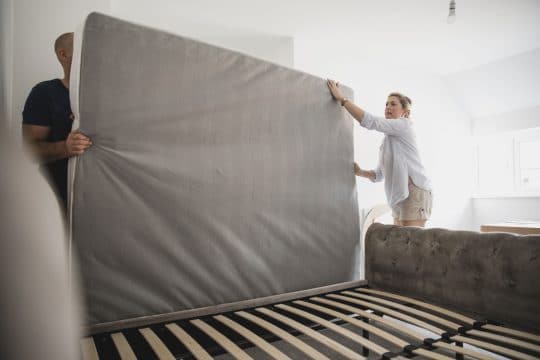- Your cart is empty
- Continue Shopping
Top Tips for Pillow Care

Your pillows are the most important bed accessories you’ll buy. In terms of sleep, your pillow is integral to your neck position. In terms of comfort, your pillow should complement your sleep style. Your pillow is also where your face, nose and mouth spend about one third of the day. Pillows matter! Buy the right type of pillow for you, and then take good care of it. Read on for our top tips on pillow care:
Do
1. Pick a pillow that suits your sleep style
First of all, think of a pillow the same way you think of your mattress. There are all kinds of available options out there today — use that abundance to your advantage and shop for the type of pillow that best suits your sleep style.
Your pillow should help improve the alignment of your spine as you sleep. Back sleepers, for instance, often like firmer, medium-height pillows or pillows with a contour for the neck and head. Stomach sleepers should use flatter pillows to reduce strain on the neck. And side sleepers need more neck support, so they tend to like firmer, higher-loft pillows or pillows designed with a cutout for your shoulder. The good news is, pillows of all heights and densities come in a variety of materials, from gel foam to down to synthetic fibers.
2. Buy more than one pillow
Buy multiple pillows when you find a style you like. It will give you a spare to either bring on trips or to trade out while you wash your favorite. You might want to buy different types of pillows for other uses, like sandwiching between your knees to take pressure off of your hips. And body pillows are popular for side sleepers, who often find better balance by hugging a pillow through the night.
3. Wash your pillow every six months
We’re often asked if you can wash your pillows. The answer is: it depends. You can usually wash down and synthetic fiber pillows in the washing machine. Use mild detergent, powder if you can, to avoid sticky residue. And send your pillow through the rinse cycle twice to be sure all of the soap is out.
Dry your pillows according to the care labels — some need to be line-dried and others can go in the dryer. Latex and foam pillows cannot be washed, so make sure to use a pillow cover to extend the life of that type of pillow.
4. Keep a clean pillow case on it
The same way you should be using a mattress protector for your mattress, use a pillow cover and keep a clean pillowcase on your pillow. Wash your pillowcases every week with your sheets, and throw your pillow cover in there every month.
5. Fluff your pillows regularly
This doesn’t apply to latex and foam pillows, of course. But if you have down or synthetic pillows, fluff them every day when you make your bed. You do make your bed, everyday, right? Well, fluff them when you do. Fluffing your pillows helps them maintain their shape and keeps the dust off.
Don’t
1. Throw your pillows on the floor when you make the bed
It’s the easiest way to get pillows out of your hair while you make the bed, we know. But floors are full of dust, and sleeping on a dusty pillow is a good recipe for a bad night’s sleep. Stack your pillows at the end of the bed, on a bench, or make the bed one side at a time.
2. Let your pet sleep on your pillow
There should be a caveat here. If you don’t experience allergy issues and you don’t mind breathing in a little pet hair, then let your dog or cat sleep wherever you want. However, if you do share your pillow with a pet, make sure you wash your pillowcases on the regular.
3. Sleep on an old, worn-out pillow
Upgrading your pillow is an easy, relatively inexpensive way to immediately improve your sleep experience. There’s no reason to sleep on a pillow that’s lost its shape or support. And if you have a down or synthetic pillow with lumps in it, that’s a sure sign it’s time to get a new one.





